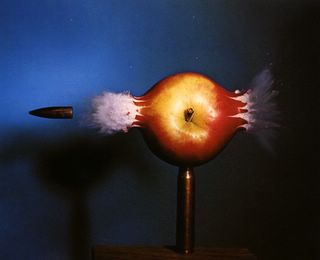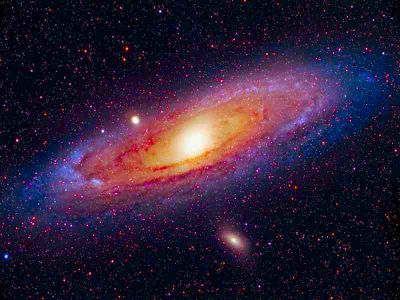
“To whom then will you liken Me, Or to whom shall I be equal?" says the Holy One. Lift up your eyes on high, And see who has created these things, Who brings out their host by number; He calls them all by name, By the greatness of His might And the strength of His power; Not one is missing… Have you not known? Have you not heard? The everlasting God, the LORD, The Creator of the ends of the earth, Neither faints nor is weary. His understanding is unsearchable.”
(Isaiah 40:25-28)
“
Creation is neither a necessity nor an accident,” writes Cornelius Plantinga Jr. in his book Engaging God’s World
.[i] He continues,
Instead, given God’s interior life that overflows with regard for others, we might say creation is an act that was fitting for God. It was so much like God to create, to imagine possible worlds and then to actualize one of them. Creation is an act of imaginative love. In fact, as the British author G. K. Chesterton once wrote, “The whole difference between construction and creation is… that a thing constructed can only be loved after it is constructed; but a thing created is loved before it exists.”
[ii]
In creation God graciously made room in the universe for other kinds of beings. And then, out of His limitless and self-sustaining resources, God began to work. Expending vast resources of ingenuity, power, and love, God expanded the realm of being, generating ten to one hundred billion galaxies, each galaxy a stupendous bonfire of as many as one hundred billion stars, and many of the stars loaded with their own orbital systems. Over some suitable length of time, God generated great galactic wealth, and He is still generating it inside certain nebulae that are, in effect, nurseries for young stars. On our own planet, God devised processes of His own imagination to make salamanders and sandhill cranes and fringed gentians. As zoologists and botanists show us (often with a kind of wonder if they are good scientists), God’s creation, as we now observe it, includes more than 750,000 species of insects and 250,000 species of plants. It includes grasshoppers that look like leaves and beetles that hitchhike on the backs of bees. Perhaps revealing a whimsical side of God’s nature, creation includes the duckbilled platypus, and also “gooney” birds, a member of the albatross family found around Midway Island in the South Pacific. With their great wingspan and set-back leg placement, gooneys are champion fliers, but they visit land so seldom that, when they do, they come in for some truly foolish landings.
For Christians, the study of creation is a classic opportunity to read Scripture and the natural world together. Scripture tells us who created the wonders of the world, and why. Study of these wonders tells us, at least in part, how God did His wonders. In creation we find not only unimaginable variety but also deep orders and interdependencies. For example, plants and human beings (and many animals) need each other’s exhalations. You take in oxygen and breathe out carbon dioxide, the very thing needed by a tree to live and to produce a little more oxygen for your next breath. (Is it any wonder that being in the presence of budding trees and blooming azaleas makes us feel fresher than acre upon acre of asphalt and concrete?) In this way, the world has been admirable arranged.
In creation we find creatures of wondrous particularity – each of them , and all of them, a display of God’s inventiveness and love. In some marvelous chapters of the book of Job (38-41) we read that God revels in His creation. God walks in the depths of the sea, cuts water channels through deserts, and leads bear cubs out of their dens. God fathers the rain and mothers the ice. He makes a pet of the mysterious Leviathan, perhaps a sea creature (41:5). When the sea bursts from the womb, God wraps it in swaddling clothes. He also speaks to the sea, as if it were His own “rambunctious and exuberant child.”
[iii] “This far you may come, and no farther,” says God (38:11). And nature talks back to God. Leviathan speaks to God “with soft words” (42:3). Lightning bolts say to God, “Here we are” (38:35). And at the dawn of creation, angels and stars form into an audience and then a choir as they watch God go to work. In one spine-tingling verse, the book of Job says that God laid the foundation of the earth “while the morning stars sang together and all the angels shouted for joy” (38:7).
These highly poetic chapters do not teach us zoology, but they do teach us something important. The chapters teach us that God loves creation. God celebrates creation. God even plays with His creation. Responding in kind, an unspoiled creature turns to God with praise generated by being or acting “in character,” by expressing its nature as God’s creature.
“The Universe begins to look more like a great thought,
than a great machine.”
SIR JAMES JEANS
Ponder...How do all these elements of creation inspire awe and wonder and worship inside of you?
“I did not ask for success; I asked for wonder.
And You gave it to me.”
RABBI ABRAHAM JOSHUA HESCHEL
“As you do not know how the spirit comes to the bones in the womb of a woman with child, so you do not know the work of God who makes everything.”
(ECCLESIASTES 11:5)
[i] Cornelius Plantinga Jr., Engaging God’s World: A Christian Vision of Faith, Learning, and Living, Grand Rapids, Michigan: William B. Eerdmans Publishing Company, 2002, 23-24.
[ii] G. K. Chesterton, Appreciation and Criticisms of the Works of Charles Dickens, Port Washington, MY: Kennikat, 1966, 14.
[iii] Eleonore Stump, “Faith and the Problem of Evil,” in Seeking Understanding: The Stob Lectures, 1986-1998, Grand Rapids: Eerdmans, 2001, 519.















